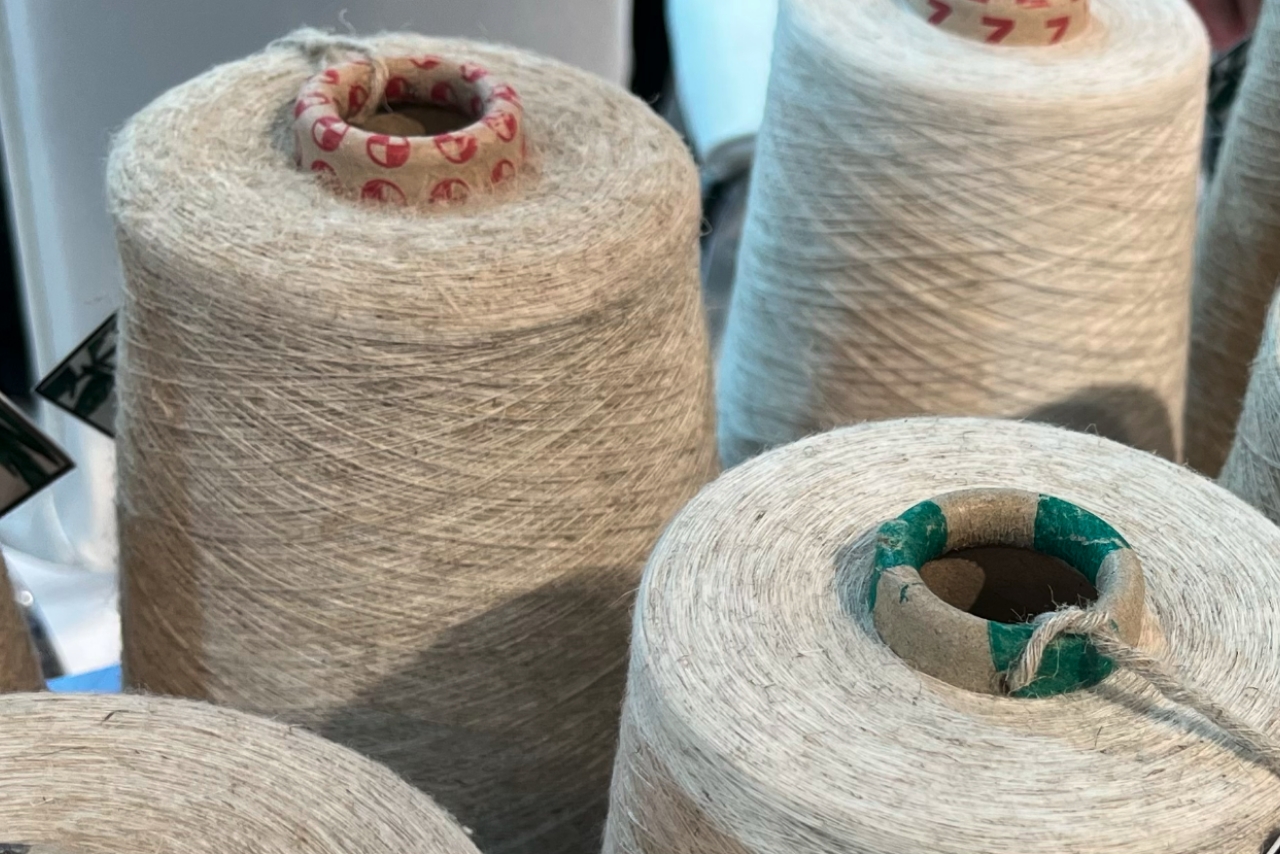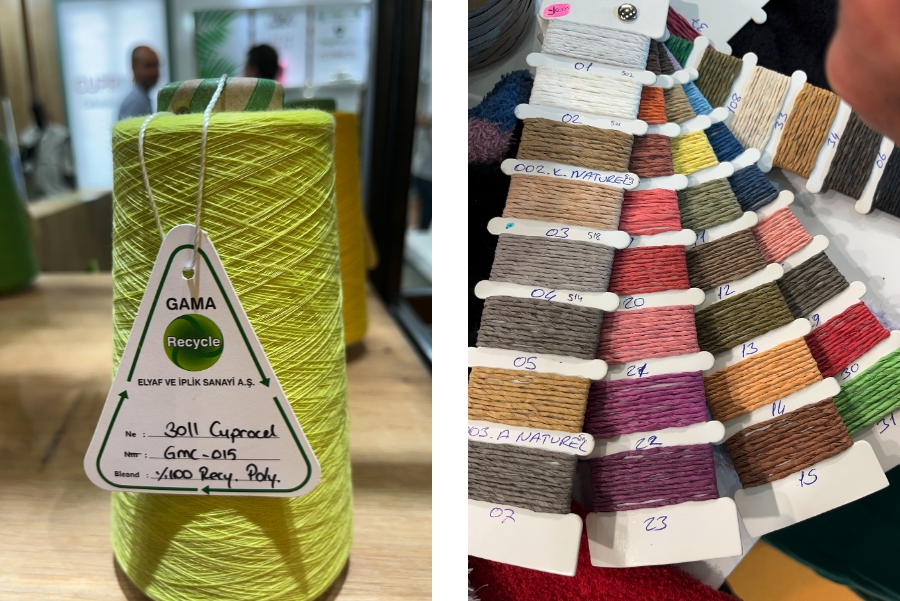In the dynamic textile world, yarn fairs are where innovation, trends and the future of the industry meet. Yarn advisor Vera de Pont, who visited the main trade fairs to keep up with the latest developments, emphasises the inextricable link between innovation and sustainability.
“A greater demand for more conscious materials influences innovation, but the other way around is also true. We must provide solutions that respond to today’s challenges.”
During recent visits to yarn fairs in Europe, including Istanbul and Den Bosch, De Pont noticed several developments. “There was a strong focus on sustainability. Everywhere I looked there were stands with recycled materials and organic fibres. It was fascinating and enlightening at the same time,” she says.

De Pont brought various samples back from the fairs to the TextielLab. Photo: Vera de Pont
Importance of transparency
All that glitters is not gold. De Pont also noticed underlying problems in the industry. “I encountered ‘greenwashing’: some exhibitors claimed that their products were 100% recycled, but on closer inspection this turned out to be untrue.” That shows how crucial transparency is. Another theme that surprised De Pont was fire safety. “This is important to us, because we make art for public spaces,” she explains. “There was a major lack of awareness about the flammability of materials among many exhibitors at the Istanbul fair. There is definitely room for improvement here.”
“There was a major lack of awareness about the flammability of materials among many exhibitors at the Istanbul fair. There is definitely room for improvement here.”
Complexity of sustainability
When discussing sustainability, the focus is often on the origin of the yarn. De Pont emphasises that this is only one facet of the bigger picture. “Sustainability in textiles extends beyond just the origins. It also includes how the yarn is applied, reused and ultimately biodegraded.” In an ideal world, De Pont would prefer only to use yarn that is fully recyclable. “Mixed yarns are often beautiful but recycling them is a challenge. It’s often difficult to separate the different fibres from each other.”
These considerations are complex, partly because of the varying quality requirements imposed on the work. Says De Pont: “In the TextielLab, we’re very aware of these issues. Every choice is carefully made. We’re continuously looking for the right synergy between aesthetics, colour, the artist’s vision and the concrete request. Artists are increasingly asking for sustainable materials and embracing other methods.”

Samples and yarn that De Pont saw at the trade fairs. Photo: Vera de Pont
Traditional materials, new opportunities
During her visits, De Pont discovered renewed interest in traditional materials such as hemp, especially in Turkey. The hemp plant grows quickly, and the production process uses less water, making it a sustainable option. “The interest in these kinds of sources shows that the industry is shifting towards more sustainable alternatives,” she says enthusiastically. But challenges remain. “We saw an elastic yarn that would be perfect for us, but the minimum order quantity was 1,500 kilos.” These barriers can make it difficult for smaller labs like the TextielLab to be fully sustainable.
Even so, she is optimistic and believes the industry is moving in the right direction. Innovations like coffee bean yarn and the growing popularity of eco-friendly yarns such as Tencel – a brand name for a type of lyocell fibre made from sustainably sourced wood pulp – indicate that manufacturers are increasingly focusing on more sustainable production methods. This shows that the industry is not only evolving but is also striving for a balance between production and environmental responsibility.